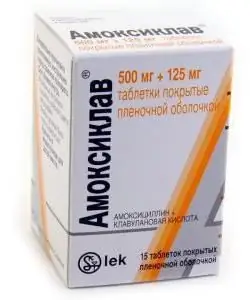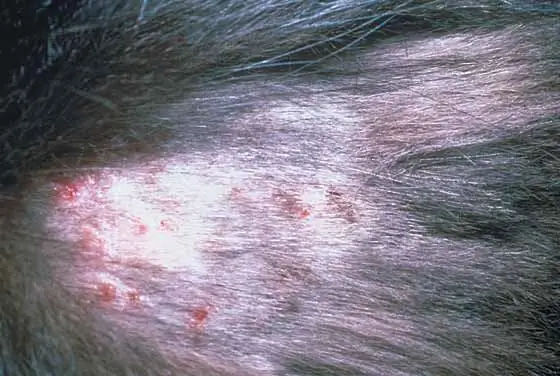2026 Author: Priscilla Miln | [email protected]. Last modified: 2025-01-22 17:55:26
Neon fish are very common in home aquariums. They are unpretentious, distinguished by interesting behavior and attractive appearance. Unfortunately, sometimes the owners are faced with the diseases of their pets. In order to take timely and correct measures, you need to know about the symptoms of possible diseases. Consider how to determine that the fish is sick? What action should be taken?
Neon disease
Plystophorosis is one of the most common diseases peculiar to neons. Most often blue neons are subject to it. From here she got her name. Also, the disease is dangerous for gracilis, firefly tetras, zebrafish, angelfish, goldfish and others. At the same time, it is believed that red neon is not susceptible to disease.
The causative agent is Pleistophora, whose spores can be swallowed by fish from the bottom of the aquarium in the event of the death of an infected fish. The parasite enters the neon's back muscles through the bloodstream, which leads to tissue destruction. As a result, vast white areas form on the back of the fish, which in the last stagesclearly visible to the human eye. Tissue death occurs. In the photo - neon fish infected with plestophorosis.

Symptoms of plestophorosis:
- poor appetite;
- dull color;
- sunken belly;
- neon strip becomes indistinguishable;
- the formation of white spots in the region of the spinal muscles.
In the early stages of the disease, drug treatment is possible. The following drugs are used for it: fumagellin, toltrazuril, albendazole. However, the most effective way to combat the disease is the destruction of all sick individuals and disinfection of the aquarium.
False Neon Disease

There is a disease similar in symptoms to plestophorosis. However, other pathogens cause it, which means that the treatment is radically different. False neon disease occurs due to poor conditions - a large accumulation of fish in cramped aquariums. As a result of nitrate and ammonia poisoning.
Blue, red and blue neons, firefly tetras and Bleher's hemigrammus are most susceptible to it.
The main symptom is the appearance of light gray spots on the body of the fish. Unlike plestophorosis, spots most often have blurred borders, although sometimes they can be clearly defined. To accurately determine the false neon disease, it is necessary to scrape the body of a sick individual and examine it under a microscope. This is a bacterial infection. For treatment, fish are kept in water with the addition of biseptol or kanamycin. The drug must be added towater every two days after a one-third water change.
Poisoning
It can be caused by poor-quality feed, chlorine, metals or other chemical products entering the water. Symptoms of neon poisoning:
- heavy breathing;
- gills brighten;
- body and gills covered with mucus;
- there is increased activity: fish rush about and try to jump out of the aquarium;
- in the last stages there is a significant decline in activity.

When poisoning, most often all the fish in the aquarium are simultaneously affected. At the same time, it is possible to determine that the poisoning was the cause of death only on the basis of facts. For example, if the fish died after changing the water, which met all the standards of hardness, acidity and temperature.
Tumors
There are benign and malignant tumors of fish. One of the most dangerous neon diseases is melanosarcoma. This is a disease that leads to tumors of pigment cells. The body of the fish turns black. Large tumors are often most clearly visible to the human eye: the body of the fish changes shape, becomes disproportionate. Tumors of the internal organs can only be determined during the autopsy of the fish.
Stress

Neons are rather shy fish, they are very prone to stress. They need to be kept in flocks, otherwise they feel uncomfortable. An abrupt change in conditions of detention, a long move, settling large active fish in an aquarium can cause stress. Because of this,neon, the appetite worsens, the fish are constantly rushing about, looking for where to hide or do not come out of hiding. To correct the situation, the cause of the unrest should be identified and eliminated. It is worth remembering that improper conditions of detention and constant stress lead to neon diseases.
Fungal diseases

Fungi most often affect the upper tissues of fish in the area of damage and wounds. At first, white threads can be seen on the affected area, which then turn into white foam. The most dangerous for neon are: branchiomycosis, internal mycoses, external mycoses.
As a result of infection, the fish becomes lethargic and inactive. The fins and skin are destroyed. She swims to the surface and gasps for air, refuses to eat. In a neglected case, the fish begins to swim on its side. Antibiotics are used to treat neon disease. Fish should be isolated from relatives for the period of treatment.
Saprolengioz is one of the most common fungal diseases. The body of the neon is covered with a bloom in the form of white spores, the appetite drops, the fins stick together. For treatment, the fish must be quarantined. The temperature should be raised to 25-26 degrees. Neon needs daily baths: table s alt, malachite green or methylene blue are added to the water. With timely treatment, the disease recedes in a week.
Thus, we have considered neon diseases and their treatment. It is worth remembering that the he alth of aquarium fish primarily depends on the conditions in which they are kept. It is important to closely monitorquality of aquarium water and food. Sick fish need to be quarantined in time to avoid infection of all pets.
Recommended:
Fish diseases: treatment and prevention. Diseases of aquarium fish

Fish diseases can be caused by a variety of factors, including: improper housing conditions (in the case of aquarium fish), infections transmitted from other fish, and also caused by single- or multi-celled parasites
Cat coughs: causes and consequences. Cat diseases: symptoms and treatment

How much joy our beloved pets bring us! Your affectionate fluffy (or smooth-haired) four-legged friend meets you from work, purrs with happiness that he has waited for his beloved owner, and in the evening tries to get on his knees and watch TV with you. Idyll… And suddenly you notice that the cat seems to be coughing. Is your pet sick?
Skin diseases in cats: a list of diseases, a description with a photo, causes and methods of treatment

The skin of pets is regularly exposed to various negative influences, they are bitten by fleas, ticks and various blood-sucking parasites. As a result of this, various skin diseases in cats, as well as problems with coat, can occur. It is very important to accurately diagnose and treat. This will prevent the occurrence of dangerous complications
York diseases: description of the most common diseases, treatment, prevention

Yorkie are not he althy enough. They get sick often. Many of the ailments are due to their small size. For example, it is traumatism of representatives. An animal usually gets injured due to human negligence. It is because of this that Yorkies are not suitable for all children. Also, these dogs often suffer from allergies and colds
Pigeons, their diseases and treatment. Pigeon diseases dangerous to humans

This article talks about the most common diseases of pigeons, many of which pose a serious danger to humans

